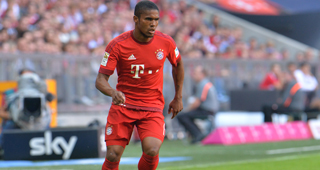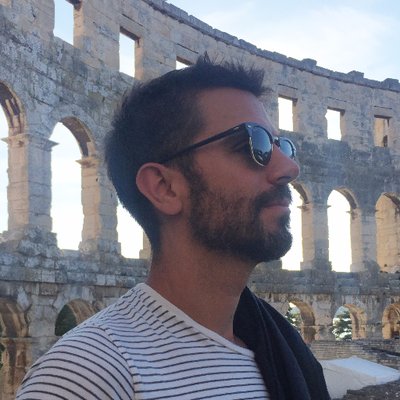Pep Guardiola inherited a Champions League winning team from Jupp Heynckes constructed largely around Arjen Robben and Franck Ribery on the wings.
Injuries and age have descended upon both players throughout the first two seasons of Guardiola’s tenure. The evaporation of Robben and Ribery have allowed Guardiola to create Bayern Munich fully in his image; extraordinary in possession with their infinite midfielders and quintessential Spanish passing, but also without the directness and athleticism needed to compete against Real Madrid in 13-14 and Barcelona in 14-15 during the semifinals of the Champions League.
For as innovative, interesting and successful Guardiola has been with his Bayern project, success or failure in the Champions League will be how he’s judged over the short and long-term.
The drop-off between Robben and Ribery and potential replacements from within Bayern like Xherdan Shaqiri, Sebastian Rode and even Mario Gotze were too significant. For players of the caliber of Robben and Ribery, acquiring an equivalent talent is predictably difficult.
Bayern probably could have survived in same fashion, but an outside option had to be purchased for this club to reach its ambitions and Guardiola moved quickly on Douglas Costa after the Copa America, who has been one part of this season’s best attacking trio with Robert Lewandowski and Thomas Muller.
An already dominant club in the Bundesliga, the addition of Costa has not only made Bayern Munich practically unbeatable domestically, but they now also have their best shot of winning the Champions League under Guardiola’s Bayern. Costa has fit perfectly and played even better and been more of an impact piece than anyone could have imagined.
Shakhtar was a Bayern opponent in last season’s Champions League giving Guardiola a chance to see Costa play in person twice. Costa was coming from one of Europe’s lesser leagues, but his performances over the previous two Champions League seasons was a clear indication he was good enough for the highest of levels.
Costa played primarily on the right previously to allow himself to cut back onto his left foot like Robben, but he’s always been known for his versatility and has been used primarily on the left. Bayern bought Costa figuring he could play on the opposite site of Robben or Ribery depending on which was healthy and in-form, but he’s moved beyond being the clear best option and has become one of the best left winger on the planet.
Similar to when Bayern bought Ribery in 2007 at the age of 24 for €24 million, Costa arrived at 24 entering his peak that should extend for a five to six year run.
Bayern likes to unlock the defense in the final third with a build-up on the right by overloading that side of the field and passing teams to death until a combination play to go to goal materializes out of overwhelming the defense. If nothing is working, Xabi Alonso will find Costa with a diagonal ball over the field to the left where he’s isolated in a 1v1 opportunity. The mere threat of this switch of the field to Costa has even allowed Bayern to do other things.
Similar to how Guardiola used Thierry Henry at Barcelona, playing Costa so far to the left creates space centrally for Lewandowski and Muller.
Costa is an electric genius with his dribble, equal parts burst and ingenuity. Costa does things like this Yu Miyagawa Vine seen around the world. After beating his man toward goal, he has been masterful at delivering precision crosses to Lewandowski and Muller, who are two of the world’s best at moving into space and finishing high quality chances.
Costa is a devastating triple threat. He creates space for himself as well as anyone and has the powerful foot to go to goal and the vision to find the right pass for an even more advantageous chance. Even with opposing sides committing so many players behind the ball, Costa is able to open up space inside the box. The dribble drops a defensive player behind him and sets up the pass, being an intelligent center of gravity moving the defense his way. Costa is a relentless force while somehow maintaining tremendous control and balance. A goal or assist can equally satisfy his ambitions.
Chelsea could have had Costa during the January transfer window, but were €10 million short of Shakhtar’s €30 million asking price and instead settled for Juan Cuadrado. Jose Mourinho quickly tired of Cuadrado and he was sent on loan to Juventus and they brought in Pedro.
A stale Chelsea squad could easily have Costa or the previously owned Kevin De Bruyne in their attack to go with Eden Hazard and Diego Costa. Douglas Costa publicly said he wanted to join Chelsea and Mourinho’s complacency when the 14-15 Premier League title was already won has clearly precipitated their fall this season. The loss of revenue for Chelsea if they indeed drop out of the Champions League next season, in addition to a lost season of contention domestically makes the missed opportunity for Costa even more devastating.
Mourinho saw the same potential in Costa as Guardiola, there’s honor in that even if he was “weak and naïve” in evaluating the cost. Nemanja Matic was bought during the January window before Chelsea’s title-winning 14-15 and made that possible; Costa could have had the same exact influence, giving Diego Costa and Hazard the same type of space he affords Lewandowski and Muller. Costa could have become this player and make Eden Hazard ‘the other Chelsea winger’ in the process, or Mourinho could have just as easily exiled him for his inconsistent commitment to tracking back.
There are many, many differences big and small between Guardiola and Mourinho, but this is why one chooses to leave before he gets bored and the other tries to leave before he gets fired. Guardiola stays beating Mourinho.
The €30 million for Costa felt like a lot of money at the time to Mourinho the way £57.6 million felt like a lot for Anthony Martial to Arsene Wenger.
These initially bold and “too rich for my blood” (even the blood of Roman Abramovich) have become two of the shrewdest, best values of 2015.



